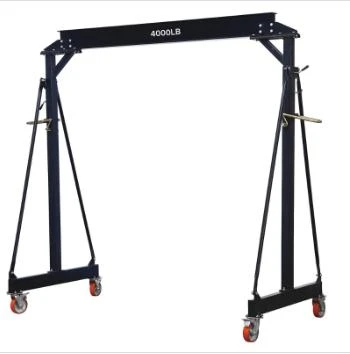Heavy Equipment Transportation and Rigging Solutions for Efficient Relocation
Understanding Machine Moving and Rigging A Comprehensive Guide
In the construction, industrial, and manufacturing sectors, machine moving and rigging are vital processes that ensure heavy equipment is relocated safely and efficiently. These operations require not just physical strength but also a deep understanding of principles related to physics, engineering, and safety. In this article, we will delve into the nuances of machine moving and rigging, the techniques involved, and the stringent safety measures necessary to ensure successful outcomes.
The Importance of Machine Moving and Rigging
Machine moving refers to the process of relocating heavy equipment and machinery from one location to another, whether within a facility or from one site to another. Rigging, on the other hand, involves the use of various equipment and devices to lift and support these heavy items during the moving process. The importance of these activities cannot be overstated; they are critical for maintaining operational efficiency, minimizing downtime, and ensuring the safety of personnel involved.
Planning and Preparation
Successful machine moving and rigging begin with thorough planning and preparation. Before any equipment is moved, it is essential to conduct a risk assessment. This includes identifying potential hazards, assessing the weight and dimensions of the machinery, and determining the best path for relocation. Depending on the type of equipment being moved, operators must consider factors such as overhead clearances, ground conditions, and the capability of the rigging equipment.
Creating a detailed plan helps in anticipating challenges that may arise during the move. This plan should outline all stages of the process, allocate tasks to the personnel involved, and specify the equipment required. Effective communication among team members is also crucial to ensure everyone understands their role and the safety protocols in place.
Rigging Equipment and Techniques
The choice of rigging equipment and techniques plays a significant role in a successful machine move. Common rigging equipment includes slings, shackles, hoists, cranes, and winches. Each of these tools has specific load ratings, which must be adhered to in order to avoid accidents.
1. Slings These are fabric or metal devices used to attach the load to the lifting apparatus. The right type of sling is crucial; for instance, chain slings offer strength, while synthetic slings provide flexibility and are lighter.
2. Cranes Depending on the lift's height and weight, different types of cranes (e.g., mobile, tower, or overhead) may be employed. Proper crane selection ensures that the load is lifted efficiently and safely.
machine moving & rigging

3. Hoists These devices are used for lifting or lowering loads vertically. They can be operated manually or powered, depending on the weight of the machinery.
The rigging techniques depend on the shape and weight of the equipment. Common methods include the use of a pick configuration, where the load is lifted from a single point, or a choke configuration, which provides more stability.
Safety Precautions
Safety is paramount during machine moving and rigging operations. Operators must follow industry standards and guidelines set by organizations such as OSHA (Occupational Safety and Health Administration) and ASME (American Society of Mechanical Engineers). Some critical safety precautions include
- Proper Training All personnel involved in moving and rigging must undergo thorough training to understand the equipment, techniques, and safety practices.
- Inspection Regular inspections of rigging equipment and machinery should be conducted to ensure they are in good working condition. Any damaged or worn-out equipment should be replaced immediately.
- Use of Personal Protective Equipment (PPE) Workers should always wear appropriate PPE, including hard hats, gloves, steel-toed boots, and eye protection.
- Communication Utilizing hand signals or radios to communicate during the lifting and moving process can help prevent accidents.
Conclusion
Machine moving and rigging are critical operations that require a combination of skill, planning, and safety awareness. By understanding the intricacies of these processes, companies can effectively move heavy equipment without compromising safety. Investing in proper training and adhering to best practices not only protects personnel but also enhances operational efficiency. As industries continue to evolve, adopting advanced technologies and methods in rigging and moving will ensure that these essential tasks are conducted smoothly and safely.
-
Unlock Seamless Relocation with Our Heavy Equipment Moving ExpertiseNewsJun.06,2025
-
Unleash Unrivaled Flexibility with Our Adjustable Gantry CraneNewsJun.06,2025
-
Unleash Heavy-Duty Efficiency with Our Industrial Gantry Crane SolutionsNewsJun.06,2025
-
Revolutionize Steel Handling with Our Magnetic Lifter RangeNewsJun.06,2025
-
Master Equipment Mobility with Premium Machinery Mover SolutionsNewsJun.06,2025
-
Elevate Your Material Handling with Magnetic Lifter TechnologyNewsJun.06,2025
-
YS Permanent Lifting Magnets: The Smarter Way to Handle SteelNewsMay.22,2025
